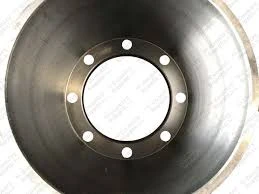
-
 Afrikaans
Afrikaans -
 Albanian
Albanian -
 Amharic
Amharic -
 Arabic
Arabic -
 Armenian
Armenian -
 Azerbaijani
Azerbaijani -
 Basque
Basque -
 Belarusian
Belarusian -
 Bengali
Bengali -
 Bosnian
Bosnian -
 Bulgarian
Bulgarian -
 Catalan
Catalan -
 Cebuano
Cebuano -
 Corsican
Corsican -
 Croatian
Croatian -
 Czech
Czech -
 Danish
Danish -
 Dutch
Dutch -
 English
English -
 Esperanto
Esperanto -
 Estonian
Estonian -
 Finnish
Finnish -
 French
French -
 Frisian
Frisian -
 Galician
Galician -
 Georgian
Georgian -
 German
German -
 Greek
Greek -
 Gujarati
Gujarati -
 Haitian Creole
Haitian Creole -
 hausa
hausa -
 hawaiian
hawaiian -
 Hebrew
Hebrew -
 Hindi
Hindi -
 Miao
Miao -
 Hungarian
Hungarian -
 Icelandic
Icelandic -
 igbo
igbo -
 Indonesian
Indonesian -
 irish
irish -
 Italian
Italian -
 Japanese
Japanese -
 Javanese
Javanese -
 Kannada
Kannada -
 kazakh
kazakh -
 Khmer
Khmer -
 Rwandese
Rwandese -
 Korean
Korean -
 Kurdish
Kurdish -
 Kyrgyz
Kyrgyz -
 Lao
Lao -
 Latin
Latin -
 Latvian
Latvian -
 Lithuanian
Lithuanian -
 Luxembourgish
Luxembourgish -
 Macedonian
Macedonian -
 Malgashi
Malgashi -
 Malay
Malay -
 Malayalam
Malayalam -
 Maltese
Maltese -
 Maori
Maori -
 Marathi
Marathi -
 Mongolian
Mongolian -
 Myanmar
Myanmar -
 Nepali
Nepali -
 Norwegian
Norwegian -
 Norwegian
Norwegian -
 Occitan
Occitan -
 Pashto
Pashto -
 Persian
Persian -
 Polish
Polish -
 Portuguese
Portuguese -
 Punjabi
Punjabi -
 Romanian
Romanian -
 Russian
Russian -
 Samoan
Samoan -
 Scottish Gaelic
Scottish Gaelic -
 Serbian
Serbian -
 Sesotho
Sesotho -
 Shona
Shona -
 Sindhi
Sindhi -
 Sinhala
Sinhala -
 Slovak
Slovak -
 Slovenian
Slovenian -
 Somali
Somali -
 Spanish
Spanish -
 Sundanese
Sundanese -
 Swahili
Swahili -
 Swedish
Swedish -
 Tagalog
Tagalog -
 Tajik
Tajik -
 Tamil
Tamil -
 Tatar
Tatar -
 Telugu
Telugu -
 Thai
Thai -
 Turkish
Turkish -
 Turkmen
Turkmen -
 Ukrainian
Ukrainian -
 Urdu
Urdu -
 Uighur
Uighur -
 Uzbek
Uzbek -
 Vietnamese
Vietnamese -
 Welsh
Welsh -
 Bantu
Bantu -
 Yiddish
Yiddish -
 Yoruba
Yoruba -
 Zulu
Zulu
brake drum rotor
Understanding Brake Drums and Rotors Key Components of Your Vehicle's Braking System
When it comes to vehicle safety, the braking system is one of the most critical components to consider. Among the essential parts of this system are the brake drums and rotors. Both serve the primary function of slowing down or stopping a vehicle, but they do so using different technologies. Understanding the differences between brake drums and rotors can help vehicle owners make informed decisions about maintenance and upgrades.
What Are Brake Drums?
Brake drums are usually found in rear drum brake systems, primarily used in older cars and in some trucks. They consist of a cylindrical drum attached to the wheel hub. When the driver presses the brake pedal, brake shoes expand against the inner surface of the drum, generating friction that slows down the wheel's rotation. This system is known for its simple construction and cost-effectiveness, making it a popular choice in certain applications.
However, brake drums have a few disadvantages. They can be prone to overheating, which may lead to brake fade during prolonged use. Additionally, drum brakes often do not dissipate heat as effectively as disc brakes, which can affect their performance over time.
What Are Brake Rotors?
On the other hand, brake rotors are metallic discs found in disc brake systems, commonly used in modern vehicles. When the brake pedal is pressed, brake calipers squeeze the brake pads against the rotors, creating friction that slows down the vehicle. This design allows for better heat dissipation, resulting in improved performance and reliability, especially during heavy braking.
brake drum rotor

Disc brakes also provide a more consistent brake feel and shorter stopping distances than drum brakes. This is particularly noticeable in high-performance vehicles, where rapid deceleration is crucial for safety. As a result, many manufacturers have transitioned to disc brakes for both front and rear wheels, though some vehicles still utilize drum brakes for the rear.
Maintenance Considerations
Both brake drums and rotors require regular maintenance to ensure optimal performance. Brake drums can develop grooves and warps over time, requiring resurfacing or replacement. Similarly, rotors can become warped or worn, necessitating either resurfacing or complete replacement.
It’s essential to inspect these components regularly, as worn-out brakes can severely compromise vehicle safety. Signs that your brake system may need attention include harsh sounds when braking, vibrations in the pedal, or a decrease in braking efficiency.
Choosing Between Drums and Rotors
When considering whether to repair or upgrade your braking system, understanding your driving habits is crucial. For daily commuting and light usage, drum brakes might still be a cost-effective option. However, if you’re frequently driving in demanding conditions or require high performance, investing in quality disc brakes is advisable.
In conclusion, both brake drums and rotors play vital roles in vehicle safety. While drum brakes offer a budget-friendly solution, disc brakes typically provide superior performance and reliability. Regular maintenance and timely inspections will ensure that your vehicle's braking system remains effective, keeping you safe on the road. Always consult with a qualified mechanic for personalized advice on your specific vehicle needs.
-
What Are Drum BrakesNewsJul.07,2025
-
Understanding Brake Drum MaterialNewsJul.07,2025
-
Semi-Trailer Brake Drum: A Key Component for Extreme Loads and Long-Distance TransportNewsJul.07,2025
-
Drum Brake Pads for SaleNewsJul.07,2025
-
Brake Drums for SaleNewsJul.07,2025
-
Brake Drum ManufacturerNewsJul.07,2025
-
Aluminum Brake Drums: The Future of High-Performance CarsNewsJul.07,2025
